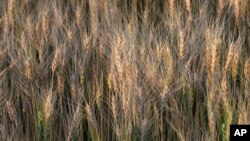Scientists are helping to combat the world hunger crisis by breeding nutrient-packed crops that will fill stomachs and lessen the effects of malnutrition.
It’s called biofortification.
It sounds complicated, but the concept is simple: create smarter seeds that grow into more nutrient-dense staple crops than regular ones. Then distribute the seeds on a large scale to farmers in developing countries, so they can grow crops that are more nutritious.
Seeds with more nutrients
This is what researchers at HarvestPlus, a Washington-based nonprofit, have been doing on a large scale since 2003, feeding an estimated 20 million people in 30 countries.
Their biofortified seeds pack one or more vital nutrients, such as iron, zinc and Vitamin A, said Bev Postma, HarvestPlus’ CEO.
“It’s very important that the seeds are not just high in nutrition, but that they are still high-yielding, they are pest resistant, they are climate resistant — because these are the things a farmer still wants more,” she said.
Deficiencies of these nutrients can leave people more vulnerable to illness and infections, and in extreme cases cause blindness and stunt growth. Children are especially affected.
The organization’s research has found that many of these effects can be reversed in a matter of months once nutrient-packed foods are introduced into the local diet.
150 varieties of 12 staples
HarvestPlus scientists have produced 150 varieties of 12 staple foods, including corn, beans, rice, lentils and wheat.
In 2003, the Bill and Melinda Gates Foundation gave the organization a $25 million grant over four years to help them scale up. This year, they are one of eight finalists for a $100 million grant from the MacArthur Foundation, which could help them realize their goal of reaching 1 billion people with biofortified crops by 2030.
“We’re not trying to change behavior, we are looking to see what people are eating and we are just switching out to make that food more nutritious,” Postma said.
Biofortified seeds are produced in a traditional manner, and they are not genetically modified.
Seed distribution
The seeds are distributed through seed companies and sometimes directly to farmers.
“We’ve learned that in some countries, if we give the seed away, we can encourage the farmers to not just grow this new variety, but then ask them to give the next year’s seed that they harvest to four new farmers,” Postma said.
In other instances, she said, they work with seed companies to persuade them to adopt biofortified seeds and sell them as part of a package of options to farmers.
“We find in some instances it is better if farmers are paying for these seeds, because then there is a perceived value and adoption is higher,” she said. Postma said they try to make sure that their seeds are not more expensive than regular varieties.
The organization works with government agriculture and health ministries in developing countries to encourage them to adopt biofortified seeds as a cost-effective way to solve some of their major health problems.











